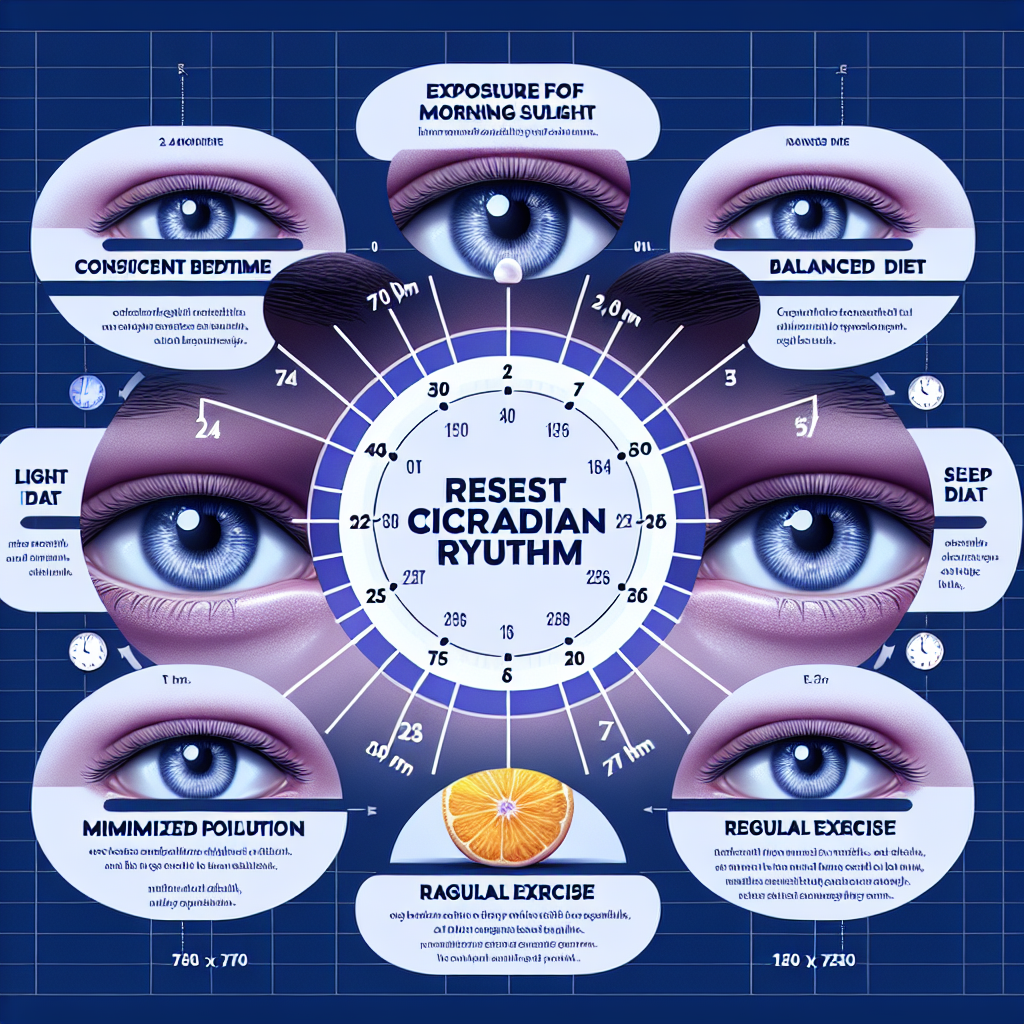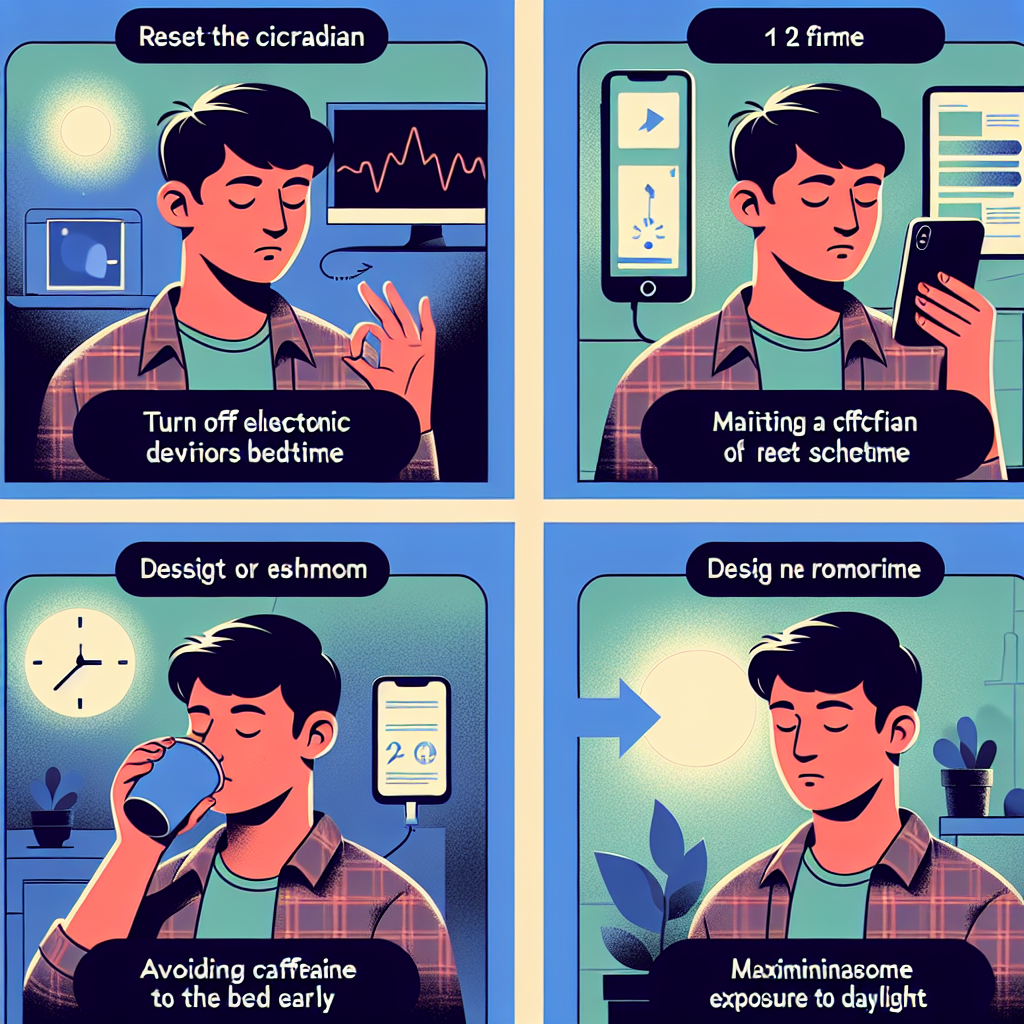How to Reset Your Circadian Rhythm

Ready to reset your circadian rhythm and improve your sleep quality? Learn the effective strategies now! Click here to start your journey towards a healthier sleep cycle.
Effective Techniques to Reset Your Circadian Rhythm
The circadian rhythm, also known as your body’s internal clock, plays a crucial role in regulating your sleep-wake cycle. It influences your physical, mental, and behavioral changes in a 24-hour cycle. However, factors such as jet lag, shift work, or poor lifestyle choices can disrupt this rhythm, leading to sleep disorders and other health issues. Fortunately, there are effective techniques to reset your circadian rhythm and restore your natural sleep pattern.
Firstly, exposure to natural light is a powerful tool to reset your circadian rhythm. Our bodies are designed to respond to the natural cycle of daylight and darkness. When sunlight enters our eyes, it signals to our brain that it’s time to wake up and start the day. Conversely, as the sun sets and darkness falls, our bodies produce melatonin, a hormone that prepares us for sleep. Therefore, spending time outside during the day, particularly in the morning, can help reset your circadian rhythm. If you can’t get outside, consider using a light therapy box that mimics natural sunlight.
Secondly, maintaining a consistent sleep schedule is another effective technique. Going to bed and waking up at the same time every day, even on weekends, can help regulate your circadian rhythm. This consistency reinforces your body’s sleep-wake cycle and can help you fall asleep and stay asleep throughout the night. It’s also important to create a relaxing bedtime routine. This could include activities such as reading a book, taking a warm bath, or practicing relaxation exercises. These activities can signal to your body that it’s time to wind down and go to sleep.
In addition to light exposure and a consistent sleep schedule, regular physical activity can also help reset your circadian rhythm. Exercise increases the body’s temperature, heart rate, and metabolism, all of which can influence your body’s internal clock. However, it’s important to time your exercise correctly. Exercising too close to bedtime can interfere with your ability to fall asleep as it stimulates the body, making it harder to wind down. Therefore, try to finish exercising at least three hours before you plan to go to sleep.
Diet also plays a role in regulating your circadian rhythm. Consuming meals at regular times each day can help reinforce your body’s internal clock. Additionally, what you eat can also affect your sleep. Try to limit caffeine and alcohol, especially in the hours leading up to bedtime, as they can interfere with your ability to fall asleep. Instead, opt for foods rich in tryptophan, an amino acid that can help increase the production of melatonin.
Lastly, managing stress is essential in maintaining a healthy circadian rhythm. Chronic stress or anxiety can disrupt your sleep-wake cycle, making it difficult to fall asleep or stay asleep. Techniques such as meditation, deep breathing, and yoga can help reduce stress and promote better sleep.
In conclusion, resetting your circadian rhythm is not a one-size-fits-all process. It requires a combination of techniques tailored to your lifestyle and needs. By incorporating these strategies into your daily routine, you can help reset your circadian rhythm, improve your sleep quality, and enhance your overall health and well-being.
Understanding and Resetting Your Circadian Rhythm: A Comprehensive Guide

The circadian rhythm, often referred to as the “body clock,” is a natural, internal system that regulates the sleep-wake cycle and repeats roughly every 24 hours. It can refer to any biological process that displays an endogenous, entrainable oscillation of about 24 hours. These
The Science Behind Resetting Your Circadian Rhythm
The circadian rhythm, often referred to as the “body clock,” is a natural, internal system that regulates the sleep-wake cycle and repeats roughly every 24 hours. It can refer to any biological process that displays an endogenous, entrainable oscillation of about 24 hours. These rhythms